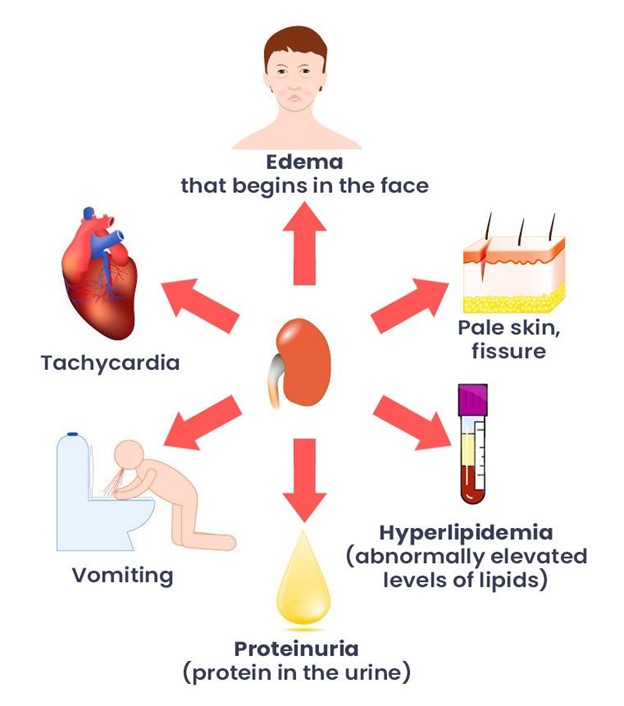A nurse is caring for a 7-year-old child who has an upper respiratory infection and type 1 diabetes mellitus. Which of the following statements by the mother indicates a need for further instruction?
“I will continue to check his blood sugar two times every day.”
"I will report a change in her breathing or any signs of confusion.”
“I will encourage her to drink half a cup of water or sugar-free fluid every 30 minutes”
"I will notify the doctor if her temperature is not controlled by acetaminophen”
The Correct Answer is A
A. "I will continue to check his blood sugar two times every day."
Correct Explanation: This statement indicates a need for further instruction.
Explanation: A child with type 1 diabetes requires frequent blood sugar monitoring, especially during illness. Checking blood sugar only twice a day is not sufficient, especially when the child has an upper respiratory infection. Illness can impact blood sugar levels, so more frequent monitoring is necessary to ensure proper diabetes management.
B. "I will report a change in her breathing or any signs of confusion."
Incorrect Explanation: This statement shows awareness of potential complications and the need to monitor for them.
Explanation: Children with type 1 diabetes are at risk of diabetic ketoacidosis (DKA) when they are sick. Changes in breathing patterns and signs of confusion are symptoms of DKA. Reporting these symptoms is important, as it could indicate a serious diabetic complication.
C. "I will encourage her to drink half a cup of water or sugar-free fluid every 30 minutes."
Incorrect Explanation: This statement demonstrates proper fluid management, especially during illness.
Explanation: Encouraging the child to stay hydrated with sugar-free fluids is essential, particularly when the child has an upper respiratory infection. Proper hydration helps prevent dehydration, which can be more concerning for a child with diabetes.
D. "I will notify the doctor if her temperature is not controlled by acetaminophen."
Incorrect Explanation: This statement shows an understanding of the importance of managing fever in a child with diabetes.
Explanation: Children with diabetes can experience difficulty managing blood sugar levels when they're sick. Fever can exacerbate this issue. Using acetaminophen to control fever is appropriate, and notifying the doctor if fever persists is a responsible action.
Nursing Test Bank
Naxlex Comprehensive Predictor Exams
Related Questions
Correct Answer is ["C","D","E"]
Explanation
A) Place a tongue depressor in the client's mouth:
Incorrect. Placing a tongue depressor in the client's mouth is not recommended during a seizure. Doing so can lead to injury, as the child may bite down on the depressor and cause harm to their teeth or mouth.
B) Restrain the client:
Incorrect. Restraining a person during a seizure can be extremely dangerous. It can lead to physical harm to both the person experiencing the seizure and the person trying to restrain them. Restraining can increase the risk of fractures, dislocations, and other injuries.
C) Assess the client's airway patency:
Correct. Assessing the client's airway patency is essential during a seizure. The nurse should ensure that the child's airway is clear and open to maintain proper breathing. This involves observing for any obstruction or difficulty in breathing and taking appropriate measures to keep the airway open.
D) Remove objects from the client's bed:
Correct. Removing objects from the client's bed is a necessary action to prevent injury during a seizure. Objects on the bed can pose a risk of harm to the child if they were to strike them during the seizure. Creating a safe environment by removing potential hazards is important.
E) Place the client in a side-lying position:
Correct. Placing the client in a side-lying position is recommended during a seizure. This position helps prevent aspiration and maintains a clear airway. It also reduces the risk of choking and allows any fluids to drain from the mouth, minimizing the risk of choking.
In summary:
Choice A is incorrect because placing a tongue depressor can cause injury.
Choice B is incorrect because restraining can lead to harm.
Choice C is correct because assessing the airway ensures proper breathing.
Choice D is correct because removing objects reduces the risk of injury.
Choice E is correct because placing the client in a side-lying position helps maintain a clear airway and prevents aspiration.
Correct Answer is C
Explanation
A) Smokey brown urine:
This finding is not typically associated with nephrotic syndrome. Smokey brown urine might indicate the presence of blood in the urine, which can be seen in conditions such as hematuria or certain kidney infections.
B) Polyuria:
Polyuria refers to excessive urination and is not a primary characteristic of nephrotic syndrome. However, children with nephrotic syndrome may have decreased urine output due to the loss of fluid and proteins through the damaged kidney filters.
C) Facial edema:
Facial edema (swelling of the face) is a hallmark of nephrotic syndrome. The loss of albumin in the urine results in a decrease in oncotic pressure (a force that helps keep fluid in the blood vessels), leading to fluid accumulation in the interstitial spaces, including the face, ankles, and abdomen.
D) Hypertension:
Hypertension (high blood pressure) is not a typical finding of nephrotic syndrome itself. However, it's possible for kidney damage to lead to secondary hypertension. In nephrotic syndrome, low levels of albumin can trigger the renin-angiotensin-aldosterone system, which can contribute to increased blood pressure.

Whether you are a student looking to ace your exams or a practicing nurse seeking to enhance your expertise , our nursing education contents will empower you with the confidence and competence to make a difference in the lives of patients and become a respected leader in the healthcare field.
Visit Naxlex, invest in your future and unlock endless possibilities with our unparalleled nursing education contents today
Report Wrong Answer on the Current Question
Do you disagree with the answer? If yes, what is your expected answer? Explain.
Kindly be descriptive with the issue you are facing.
